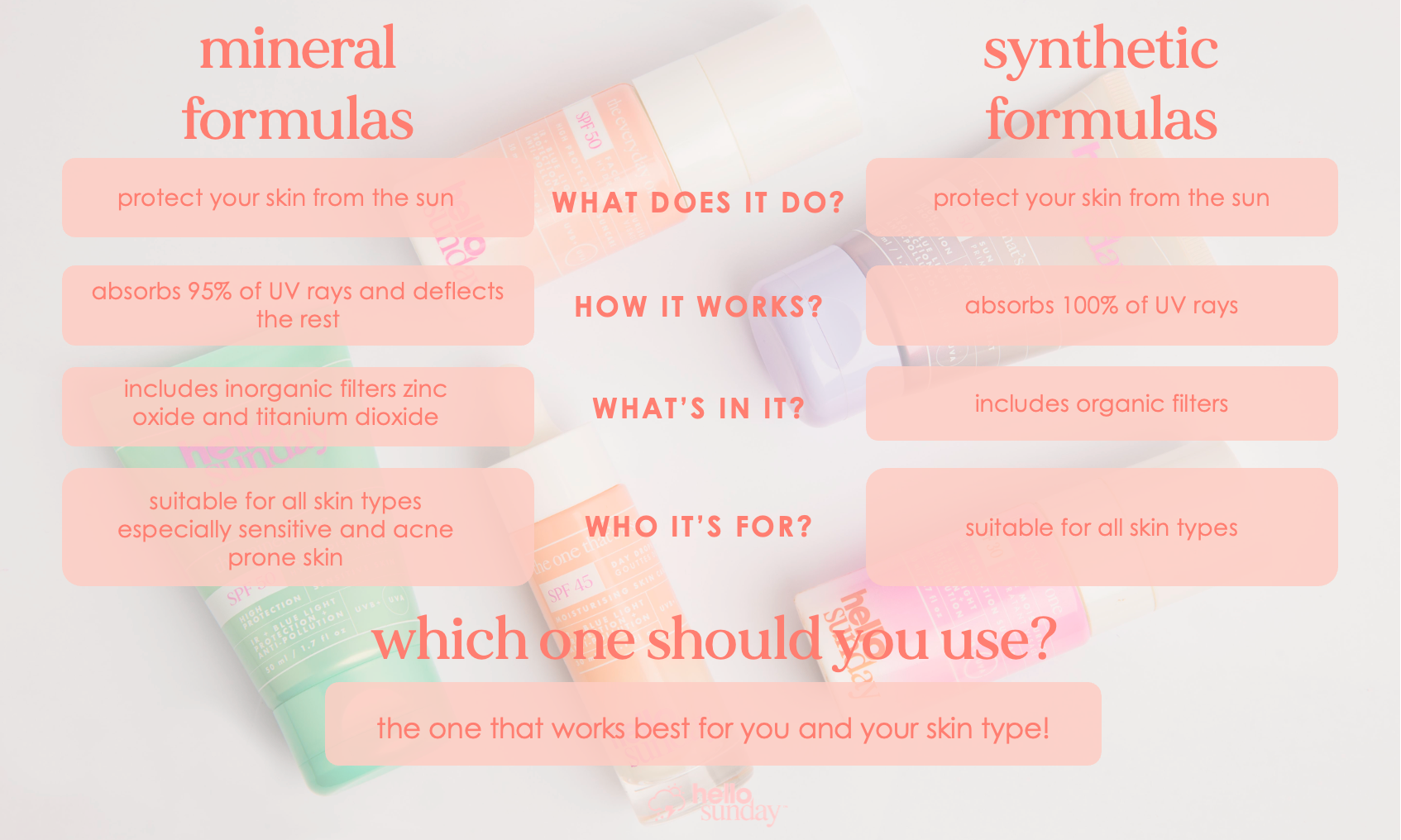
You know it, we know it, everyone knows it now (and if they don’t, tell them to follow us and they’ll know it too); wearing skin protection every day is an absolute must. There’s no excuse anymore with the amount of options you have at your fingertips. The difficulty lies in finding one that works for you, your skin and your routine. Although trial and error might be the perfect way to find the formula best suited to your skin type, a little help in understanding the differences between the two types of sunscreen formulas never hurt anybody…
The two types of sunscreen are mineral and synthetic. Although they tend to be compared and plotted against each other, this doesn’t really make sense as they are to completely different products... Neither is better or worse than the other as fundamentally they do the same thing, which is protect your skin. It would be like comparing a hydrating moisturiser and a hydrating serum; same idea, different execution. So really, it isn’t a debate at all but rather a search. The search for the one that is a better fit for your skin and therefore the one you should opt to use. So let’s break down the differences.
In terms of the way they work, they are quite similar. The main difference between both types is actually their ingredients. Mineral sunscreens contain inorganic ingredients titanium dioxide and zinc oxide whilst synthetic include inorganic ingredients in their formulas. Synthetic formulas also include more active ingredients.
Which one is better for you?
Well, that just depends on what you prefer. We’ve put together a list of the main characteristics of each and whichever one ticks off the most ‘absolute skin protection must haves’ boxes will probably be the one for you.
Mineral (also referred to as physical) Formulas:
- Typically thicker in texture
- Great for more sensitive and acne prone skin types
- Non cosmetic tint to help blend into the skin
- Do not penetrate below the top layers of the skin
- Inorganic ingredients: zinc oxide and titanium dioxide
Synthetic (also referred to as chemical) Formulas:
- Typically lighter in texture
- Invisible formulas
- Can cause irritation for those with super sensitive skin
- Organic ingredients
Using this info, it will be easier to understand which products may work better for your skin. It’s also important to note that just like any other skincare product, your skin protection needs may change throughout the year. In the summer you may opt for the one that’s a serum as it is lighter and provides a glowy finish but in the winter you may find that the mineral is better as it is thicker, super hydrating and provides a more natural finish. Although skin protection isn’t seasonal, your skin protection wardrobe is! So match your skin protection to your needs!
